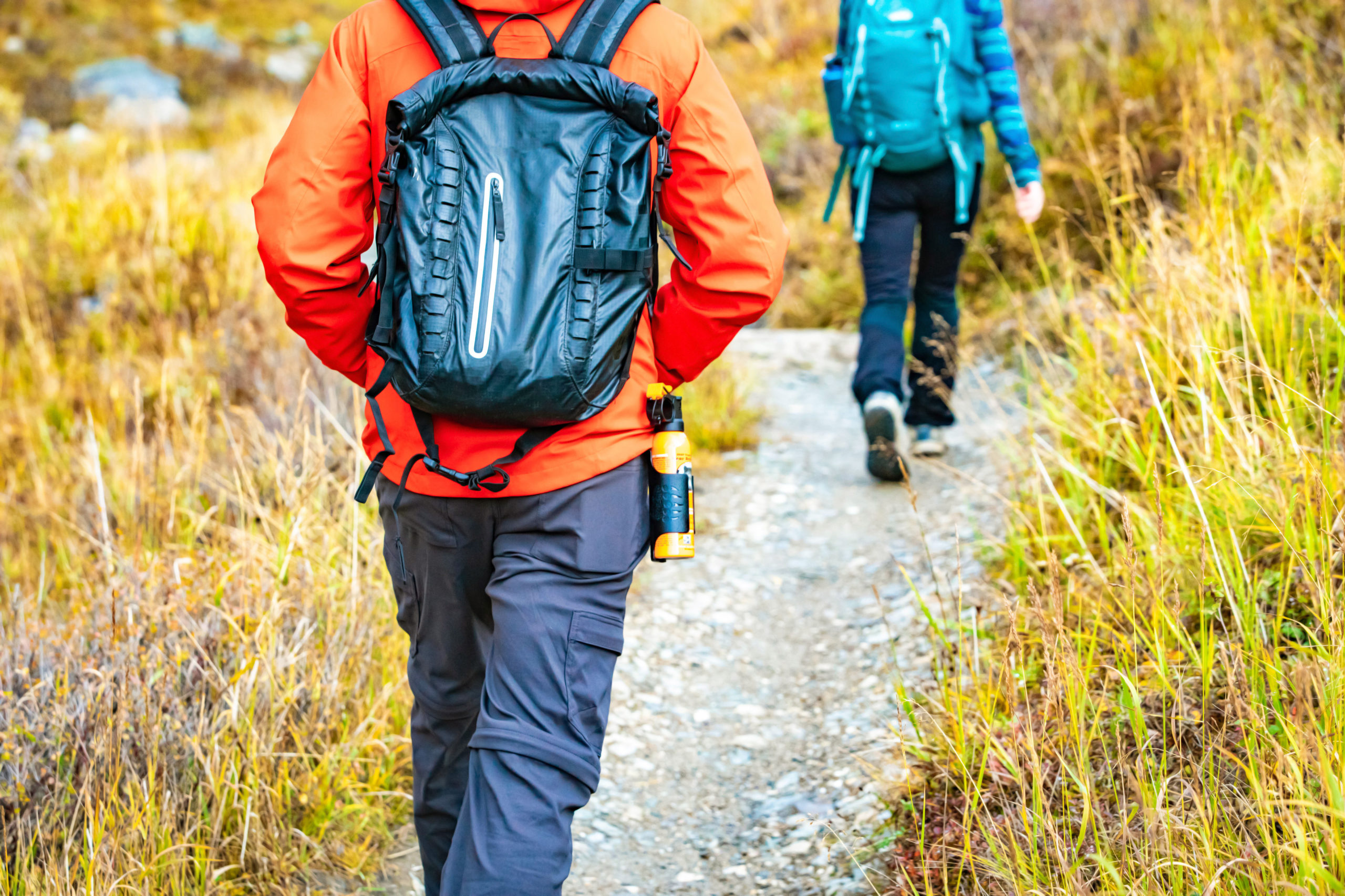Interagency Grizzly Bear Committee (IGBC) Bear Spray Guidelines (2017)
The IGBC strongly encourages all who live, work or recreate in bear habitat to carry bear spray in an easily accessible manner and to be familiar with how to use it. Carrying bear spray is not a substitute for adhering to proper bear avoidance safety techniques.

These guidelines are offered in an effort to provide the public with important information about bear spray and recommendations on how to select an effective bear spray. The IGBC does not promote or endorse any particular commercial bear spray product.
- Purchase products that are clearly labeled for deterring attacks by bears. If in doubt, ask a salesperson specifically for bear spray.
- Only purchase bear spray that is registered by the U.S. Environmental Protection Agency (EPA). The EPA registration number is displayed on the front label of bear spray canisters.
- Use the EPA-registered bear spray in accordance with its label instructions.
- Given the unpredictable situations that may be encountered and the possible need to use bear spray multiple times during the course of one trip (e.g., wind, multiple bears, the hike out, etc.), be sure to carry an adequate amount of bear spray. Consider carrying two cans.
Bear spray is only effective when used as an airborne deterrent sprayed as a cloud at an aggressive animal. It should not be applied to people, tents, packs, other equipment or surrounding areas as a repellent. Bear spray should be used as a deterrent only in an aggressive or attacking confrontation with a bear. Never approach, interact with, or feed a bear.
Once the bear has retreated, leave the area as quickly as possible (don’t run) or go to an immediate area of safety such as a vehicle, tree or building. Do not chase or pursue the animal.
Each person should carry a can of bear spray when working or recreating in bear habitat. Spray should be carried where it can be accessed quickly, such as in a hip or chest holster. In your tent, keep bear spray readily available next to your flashlight. You should also keep a can available in your cooking area. Be sure to check the expiration date on your can of bear spray.
No deterrent is 100% effective and the IGBC does not guarantee the effectiveness of any product; however, compared to all other methods (including firearms) bear spray has demonstrated the most success in fending off threatening and attacking bears and preventing injury to the person and animal involved. The IGBC recommends the use of bear spray in addition to following proper bear avoidance safety practices. Applying good bear safety techniques along with the appropriate use of bear spray will reduce human injuries caused by bears, reduce the number of grizzly bears killed in self-defense, and help promote the recovery and survival of grizzly bears.
Frequently Asked Questions
Bear spray is a powerful deterrent made of capsaicin (the “hot” in hot peppers), which, when used correctly, can deter bear attacks. Bear spray inflames the bear’s eyes and upper respiratory system, causing intense burning and giving you and your loved ones time to escape. Bear spray emerges from the canister at over 70 mph, so it is likely be effective even under windy conditions.
Bear spray is a deterrent, not a repellent; use it only during an encounter with an aggressive bear. Pre-sprayed objects may actually attract bears and other wildlife.
Yes! In a study of bear spray incidents in Alaska, spray effectively deterred undesirable behavior more than 90% of the time. In 72 incidents involving 175 people, only three people were harmed, none seriously.
You must carry the spray on your person, know how to use it, and be ready on a moment’s notice.
Bear spray is available in many outdoor, hunting and sporting goods stores. You can also order it online. Canisters labeled “pepper spray,” may not have the correct concentration of ingredients. Instead, look for canisters marked “Bear Spray” or “Bear Deterrent,” with a minimum of 7.9 ounces (225 gr) of product and an EPA registration. Check the expiration date and replace when it has expired.
Bear spray works on all bear species in North America. Bear spray may also successfully deter other wildlife (mammals) such as moose and mountain lions during encounters.
Treat bear spray with respect. Bear spray in your face causes involuntary eye closure and pain for up to 45 minutes. At very close range, the pressure can cause permanent eye damage.
Bear spray is a great tool to carry in addition to your gun. When a bear attacks, bear spray offers several advantages over a firearm:
- Bear spray requires less accuracy than bullets fired at a moving target, especially when you’re under stress.
- Accidental discharges or badly aimed firearms can kill people, while bear spray has never caused a fatality. Bear spray leaves the bear alive, and less likely to approach humans in the future.
- Firing a warning shot from a gun may not scare a bear away, but a sprayed bear is likely to leave.
There are several differences between bear spray and pepper spray:
- You can expect bear spray to shoot farther than regular pepper spray and cover a wider area. Most bear sprays shoot 20 to 30 feet in range.
- Bear spray is more highly regulated by the Environmental Protection Agency to ensure it is effective and humane.
- The EPA measures the amount of capsaicin and related capsaicinoids of bear spray and pepper spray. The capsaicinoid percentage in bear deterrent is typically 2% while in pepper spray it’s only 1.33%

